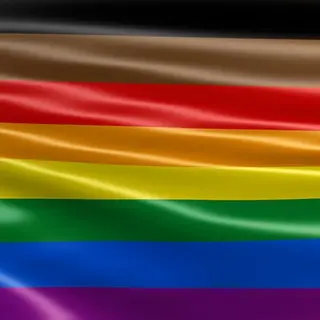Supreme Court Rules Federal Civil Rights Law Protects LGBTQ Individuals From Workplace Discrimination - Here’s What This Landmark Decision Means for Your Business

Table of contents
- 1.What Employers Need to Know
- 2.Beyond the Minimum
On Monday of this week, in a 6-to-3 vote, the U.S. Supreme Court ruled that workplace discrimination because of an individual’s sexual orientation or gender identity — including being transgender — is unlawful discrimination under Title VII of the Civil Rights Act of 1964 (“Title VII”). Title VII bars discrimination against workers because of race, color, religion, national origin, and sex. What conduct constitutes discrimination “because of . . . sex” has broadened over the years, with the Court’s opinion this week confirming that sexual orientation discrimination, gender identity discrimination or discrimination on the basis of a person’s transgender status are all forms of “sex” discrimination under Title VII.
The basis for the Court’s ruling in Bostock v. Clayton County was summarized by Justice Gorsuch in his majority opinion: “An individual’s homosexuality or transgender status is not relevant to employment decisions […] it is impossible to discriminate against a person for being homosexual or transgender without discriminating against that individual based on sex.”
The Court went on to explain, “by discriminating against homosexuals, the employer intentionally penalizes men for being attracted to men and women for being attracted to women. By discriminating against transgender persons, the employer unavoidably discriminates against persons with one sex identified at birth and another today.” Lastly, the Court noted that its decision addresses only discrimination under Title VII. It does not address other issues involving sexual orientation and gender identity, such as questions associated with use of bathrooms and locker rooms, or questions associated with religious freedom or healthcare coverage.
What Employers Need to Know
While twenty two states in the country and many local governments already have laws prohibiting employers from discrimination with respect to an employee’s sexual orientation, and gender identity, seventeen states had no existing prohibitions against LGBTQ discrimination. As a result of the Supreme Court ruling, all companies now must take proactive steps to prevent and prohibit LGBTQ discrimination in the workplace. In order to achieve this, companies should review and update written policies and handbooks to ensure that, at a minimum, sexual orientation and transgender status are added as protected categories, or the definition of “sex” is updated to include these categories. Dress code policies, to the extent they specify gender, should be reviewed and applied to ensure that transgender and transitioning employees are permitted to follow the dress code of the gender with which they identify.
Beyond the Minimum
In many ways reviewing and updating policies and handbooks to ensure that sexual orientation and transgender status are added as protected categories is the minimum that any company should be doing. As noted above, the Supreme Court’s opinion does not address other matters that may arise in the workplace, more commonly with regard to LGBTQ employees, so companies would be wise to consider how this ruling will impact future court decisions on these related topics – and employers may see an increase in federal litigation alleging discrimination against employees who identify as part of the LGBTQ community in the near future. Accordingly, companies may want to reconsider all their policies, and their approach to diversity, equity and inclusion more generally. Not only with an eye towards this new obligation, but also with consideration to the concept of creating a culture where employees feel that they belong.
Specifically, companies should review their policies regarding single-sex restrooms and locker rooms to ensure that transgender and transitioning employees are permitted to use the restroom and locker room of the sex with which they identify and also consider that single-sex restrooms do not necessarily accommodate employees who identify as non-binary. Companies should also review health and other benefits offerings to ensure that transgender employees and those with same-sex spouses and domestic partners have equal access to employee benefits.
Policies that address these issues are the minimum standard. Companies should also provide training to employees – particularly the managers and human resources individuals involved with hiring, promotion, discipline, and discharge – to ensure they are aware that an individual’s sexual orientation and transgender status are included in the protected category of sex and cannot be the basis of any employment decisions, and that they understand the reasons behind the new policies and procedures.
As is always the case, once employees have been trained on the new policies and procedures, it is imperative that each decision regarding employees, and the reason behind such decision, is carefully documented. Now is a great time to ensure that across your business, you have appropriate practices in place to ensure that the reasons for employment decisions are memorialized contemporaneously in accordance with and with reference to your company policies. Not only does this help to ensure that your company is taking a thorough and process driven approach to employment decisions, which helps to implement your policies against discriminatory conduct, memorialization in this manner should produce evidence of legitimate, non-discriminatory and non-retaliatory reasons for your company’s employment decisions and will be the best defense against allegations that an employment decision was made for pre-textual reasons.
On top of making practical changes to policies and handbooks, in recent years there has been an increased push for companies to develop an approach to fostering diversity, equity and inclusion in the workplace. In fact, more than 200 companies, including Apple, Facebook, Google and Amazon, signed a “friend of the court” brief that was filed as part of the cases that the Supreme Court heard, in which they requested that the Supreme Court find that Title VII includes sexual orientation and gender identity.
There is a well-known report from the McKinsey & Company entitled Diversity Matters, which tells us that more diverse companies performed better, and that diversity had a positive impact when it came to attracting talent, gaining customers, increasing employee satisfaction, improving decision making and enhancing the company’s image. Just last month, McKinsey released an update entitled Diversity Still Matters, in which it said that companies pulling back from diversity and inclusion as a result of the COVID-19 Pandemic, may be “placing themselves at a disadvantage; they could not only face a backlash from customers and talent now but also, down the line, fail to better position themselves for growth and renewal.”
As companies develop an understanding of the value of diversity, equity and inclusion programs in the workplace, it is worthwhile considering the next step, of belonging. The BetterUp Belonging Report tells us that employees with a high sense of belonging had 75% fewer sick days, which equates to $2.5M in productivity gain a year for every 10,000 employees. It also showed that employees who felt excluded had a 50% higher turnover rate, which cost employers $10M a year for every 10,000 employees. Lastly, the report showed that employees who felt like they belonged at their company had a 56% increase in job performance, which led to a gain of $52M a year for every 10,000 employees.
As the McKinsey and BetterUp reports show, having diversity in the workforce and doing more than just complying with the law, has positive effects beyond simply avoiding or mitigating the impact of litigation. A strong and inclusive company culture where your employees feel that they belong will help attract and retain employees and customers by showing prospective employees, current employees, customers and suppliers what the company stands for, all while helping the company perform at a higher level. . It’s also, quite simply and in the best argument for a program aimed at ensuring your employees feel that they belong, the right thing to do.
If you are a TriNet customer and would like more information about how TriNet can help you with your policies, handbooks or diversity and inclusion initiatives, please contact your TriNet Customer Experience contact.
This communication is for informational purposes only; it is not legal, tax or accounting advice; and is not an offer to sell, buy or procure insurance.
This post may contain hyperlinks to websites operated by parties other than TriNet. Such hyperlinks are provided for reference only. TriNet does not control such websites and is not responsible for their content. Inclusion of such hyperlinks on TriNet.com does not necessarily imply any endorsement of the material on such websites or association with their operators.
 |
 |
|
| Samantha Wellington Senior Vice President, Chief Legal Officer and Secretary, TriNet |
Ian Naramore Corporate Counsel, Claims, TriNet |
Table of contents
- 1.What Employers Need to Know
- 2.Beyond the Minimum

